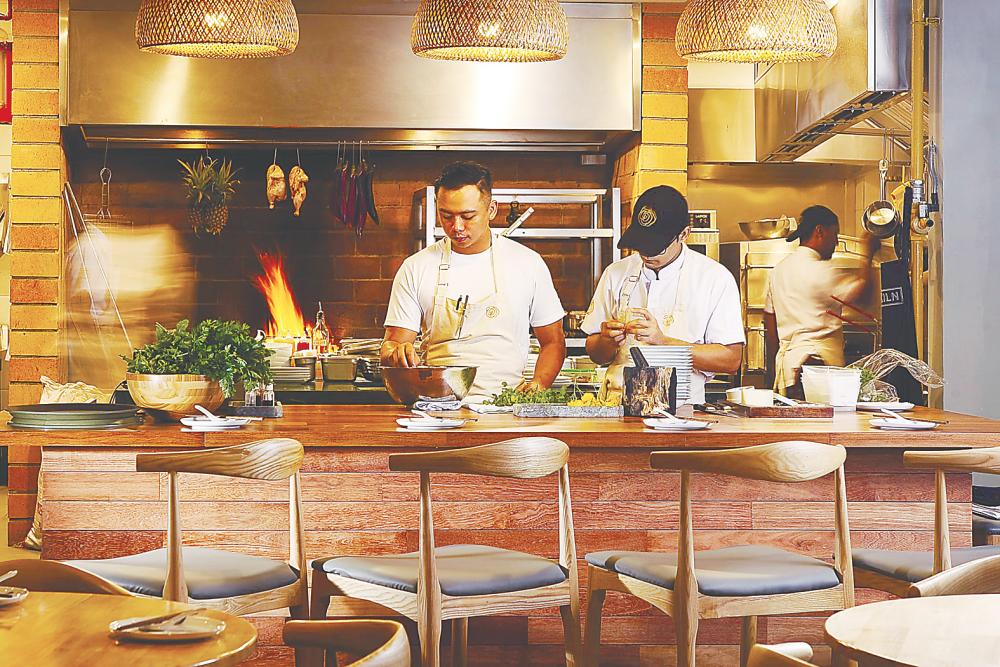WHEN was the last time you had good food that actually exceeded your expectations while dining in a restaurant?
With professional chefs like Nicholas Scorpion adapting from traditional South East Asian flavours, and transforming them into modern dishes of the now, a reviving dining experience awaits at Jing Ze Contemporary Asian Restaurant.
Hailing from Singapore, the 29-year-old chef, owner and COO who has been cooking for 13 years, worked with Janice Wong at 2amdessert bar and then spent six years under the wing of celebrated UK chef Ryan Clift - who Scorpion credits his culinary chops to - at Clift’s Singaporean flagship restaurant Tippling Club.
During his time with the former head chef of Melbourne’s critically acclaimed Vue de Monde, Scorpion got to cook in places across the globe like Spain, New York, and Australia, culminating a culinary experience bank that served him at his last, two-year stint in Bali’s Kiln, before opening Jing Ze (a nod to his Chinese name) in Section 17, PJ last September.
“Not trying to put ourselves on a pedestal, but I would love to know that when people come to the restaurant, they come for the food, and not because they were around the area,” commented the chef about Jing Ze’s quaint neighbourhood location, in a recent interview.
“The direction of the food would always stem from something traditional,” he said.
“So, we like to play and adapt from things that are traditional, but along the way come up with new classics.
“I like to put a spin on things that make it slightly more engaging, fun, if you will, to the current day diner in a modern restaurant, so we’re not doing pastas, burgers, pizzas.
“Every single one of these dishes is very conceptualised and focused on three countries in South East Asia or even one. The technique could be taken from a European technique, which is where most of my training comes from.
Cleverly thought-up dishes appear on the menu, like aged Hiramasa Kingfish crudo, which Scorpion says is aged in a similar theory as beef following techniques long-used in Japan, and the smoked Mulard duck, a Pekin-Muscovy duck hybrid that yields a meatier, more satisfying cut of meat.
The former gets a caramelised, creamy note from the burnt cream and mustard sorbet, while a bite of the steak-like duck with the naturally sweet roast leek and sour in-house fermented purple cabbage, served with rawon sauce, expresses a gaminess unlike crispier dishes like Indonesian bebek goreng.
“We have a little fermentation process upstairs where we ferment fruits and vegetables ourselves, just to create a bit of lactic acid bacteria to give it a sour note, the same bacteria used in making kimchi.
Scorpion said: “What I really like about this dish is actually the sauce, that is made from buah keluak. This was adapted from an Indonesian [soup] in Surabaya called rawon [and] is actually a beef oxtail soup that is made out of this black seed (buah keluak).
There’s also the gula melaka-glazed grilled stuff wings that sits atop a creamy coconut snake bean curry. “This is one of our snacks, which was very delicately taken off the bones of the wings, and then stuffed with its own meat - meat from the neck, the liver, the skin, as well as the thigh.
The dish marries inspiration from Balinese “ayam panggang on the streets” and Thai jungle curry but with “nuances of that very clear cut South East Asian flavour, like coconut milk, turmeric, and galangal.”
“I would recommend using your hands, actually. Dip it in a bit of sauce and just pop the whole thing in your mouth like a lollipop.
Cabbage heart is essentially a modern retelling of traditional lontong. This all-vegetable dish provides quite a meaty bite while letting you get hands-on with the grub.
The heart of the cabbage is slowly cooked in a French vegetable braising stock, and nothing goes to waste, as the external leaves are also added to the stock. The tender cabbage heart is then grilled gently over the fire for a touch of smokiness and draped with pickled daikon.
Resembling a thin yellow pancake, the kuih kunyit that is part of the dish serves as a canvas to wrap the varying vegetable components -besides mopping up excess sauce - for one yummy mouthful. “So use your hands, tear it up, and kind of have fun with it,” encouraged Scorpion.
Meanwhile, the “very English” beef tartare is definitely a personal favourite (plus the cabbage heart). The delicious raw beef and fermented shitake mushroom mixture come with a side XO chips that are made in house from whole potatoes, and sauce from dehydrated scallops.
Topped with spring onion and wood sorrel for a burst of citrus, the tartare scooped with the thick-cut chips can get pretty addictive, and likely cause sudden cravings even days after.
Dessert, a play on different textures of pumpkin, share the same thoughtful approach, drawn from reality, in this case, smashed roasted pumpkin with glutinous rice, a common villager’s snack in Bali he used to enjoy during 5am market runs.
The chef’s plated version comes with an added pumpkin sorbet that “symbolises the chill of the wind” on his way home by scooter.
“It’s inspired by stories, it’s inspired by a time in the past.”













